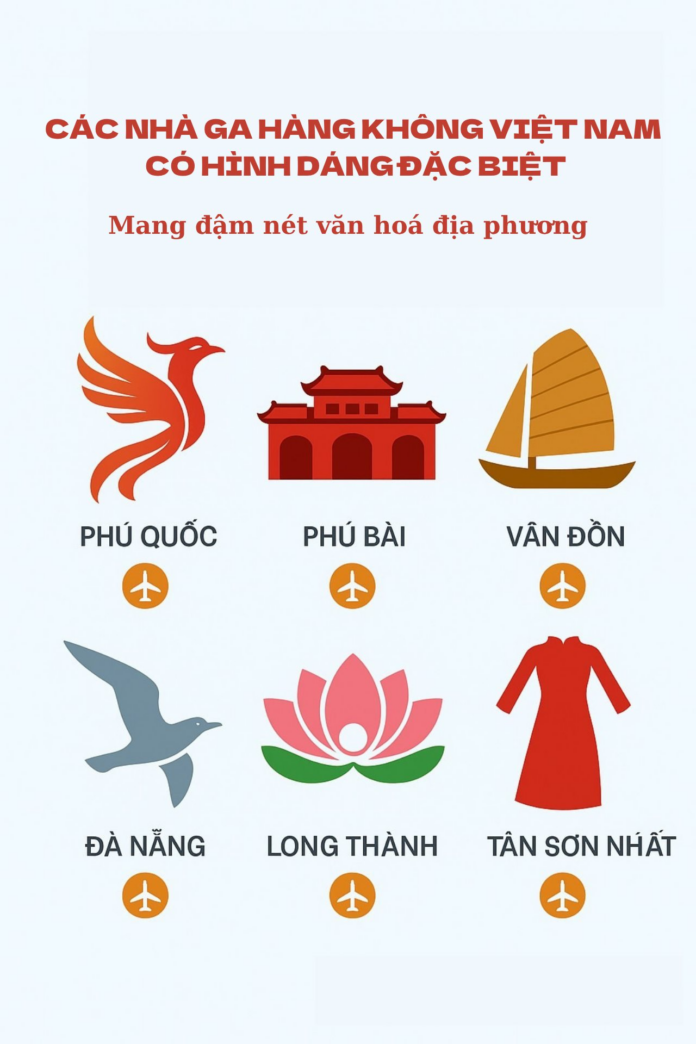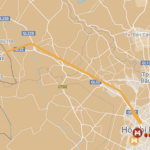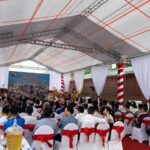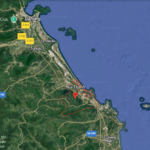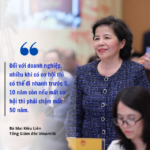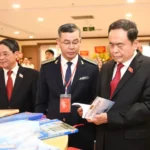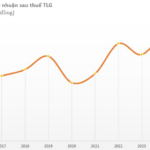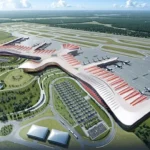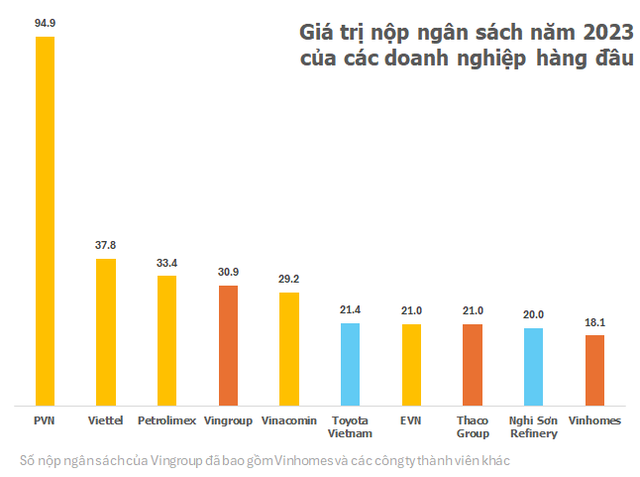Vietnam’s airport terminals play a pivotal role in the country’s economic development, serving as vital transportation hubs that facilitate rapid connections between regions and between Vietnam and the world. Some of these terminals stand out for their unique architectural designs, deeply rooted in the nation’s cultural heritage. They not only create aesthetic highlights but also reflect the modern and sustainable development of Vietnam’s aviation infrastructure.
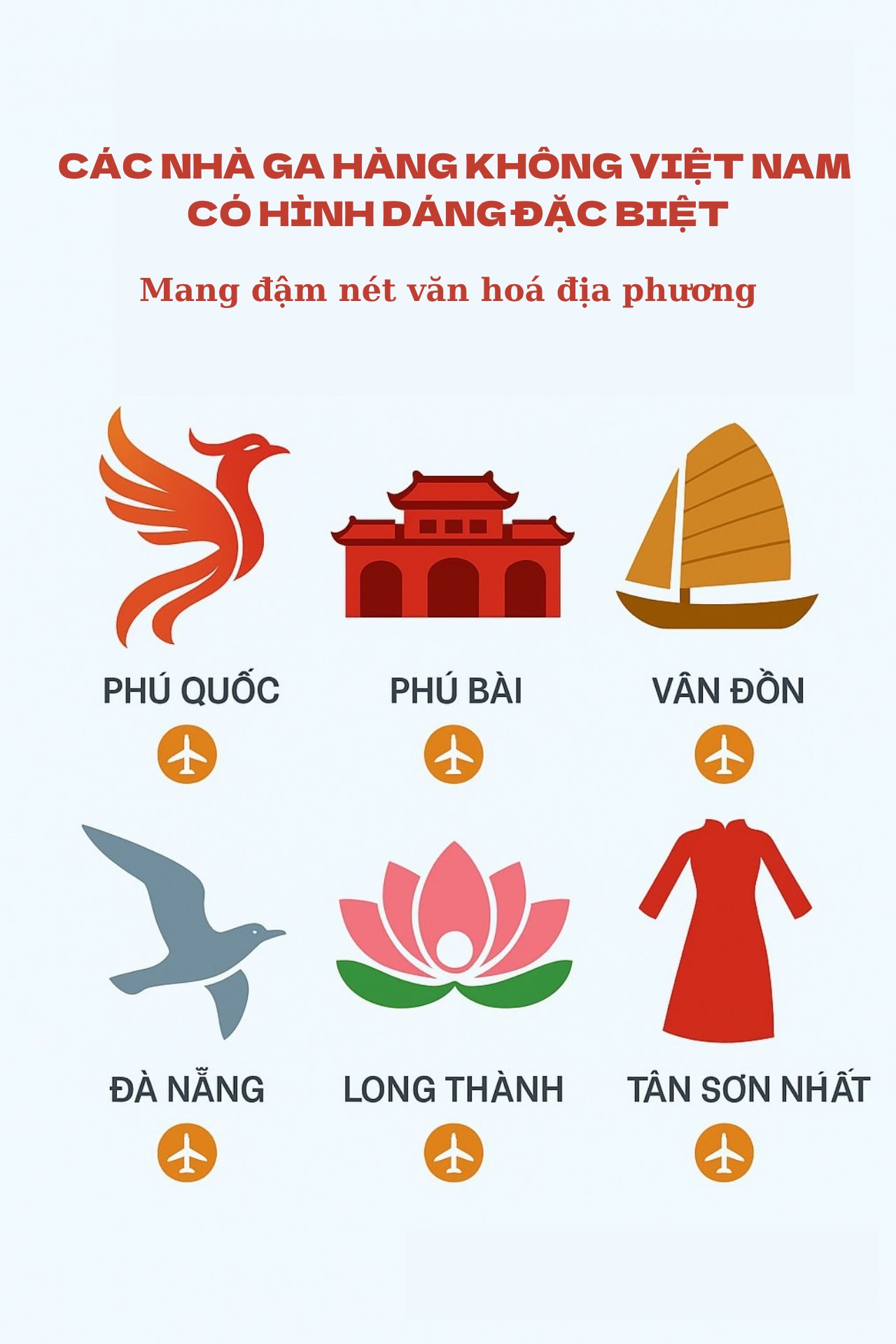
The role and impact of airport terminals in Vietnam’s economic development and transportation network.
Terminal 2, Phu Quoc International Airport
According to the Phu Quoc International Airport master plan for 2021-2030, with a vision towards 2050, announced by the People’s Committee of Kien Giang Province, the existing Terminal 1 will be retained. Meanwhile, Terminal 2 will be constructed to international standards, designed by CPG Airport (Singapore), drawing inspiration from the image of a phoenix in flight—a symbol of the aspirations and dynamic development of Vietnamese aviation.
A key aspect of this plan is the addition of nearly 200 hectares, increasing the total land area to 1,050 hectares, to ensure long-term development and readiness for the APEC Summit Week in 2027.
The projected investment by 2030 is estimated at VND 26,570 billion. By 2050, an additional VND 25,790 billion is expected to be required for infrastructure upgrades and completion.
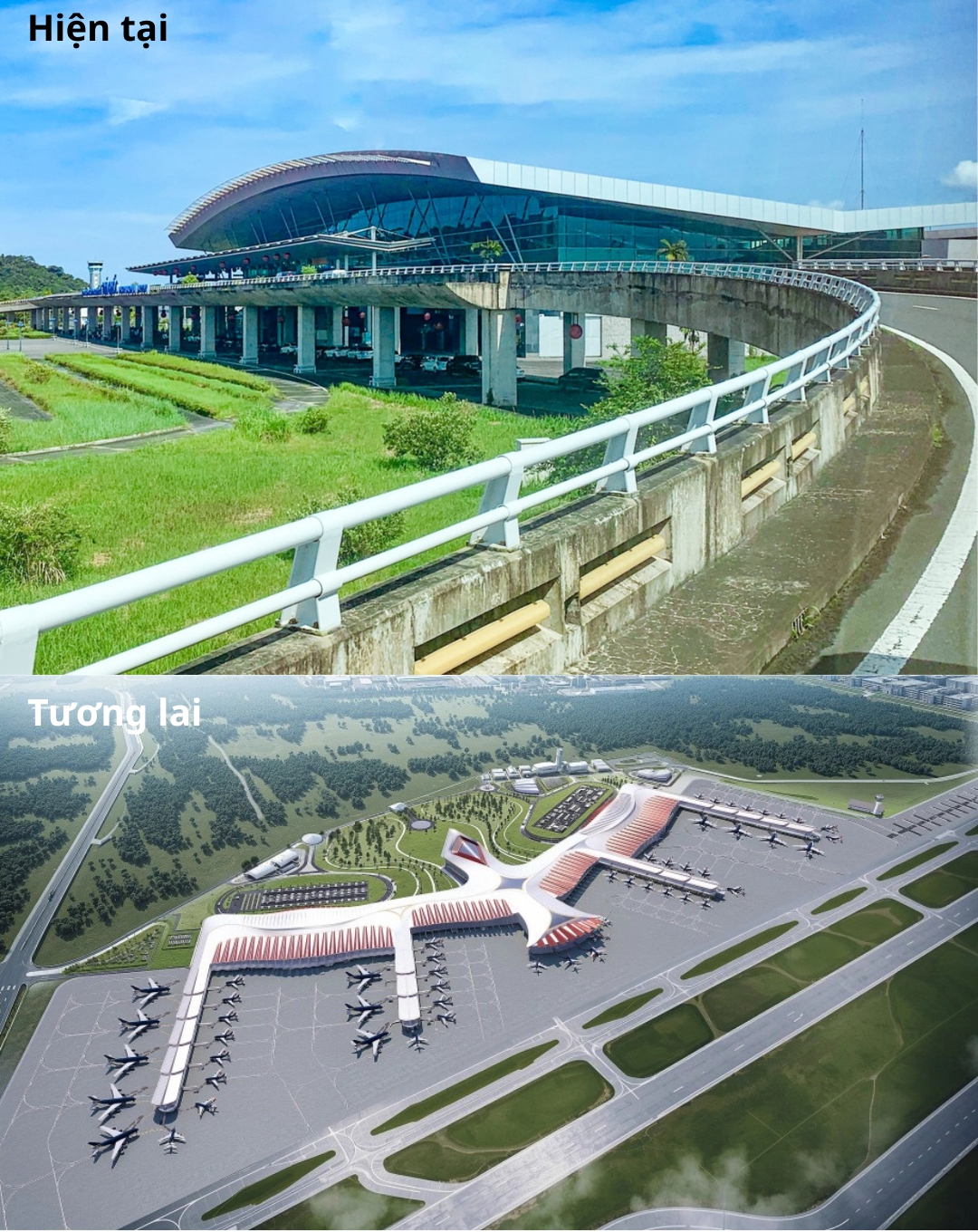
Artistic rendering of Terminal 2, showcasing its modern design and spacious interior.
The project to upgrade Phu Quoc International Airport has attracted the involvement of two financially strong and experienced private investors, Sun Group and IPP Group, intensifying the competition.
In late January 2025, as the Chairman of IPP Group, “Boss” of luxury brands Johnathan Hanh Nguyen, sent a document to the Prime Minister and several relevant ministries proposing to invest in and develop Terminal 2 of Phu Quoc International Airport.
IPP Group is a familiar name in airport infrastructure investment and duty-free business. They were the investors in Terminal 2 of Cam Ranh International Airport (Khanh Hoa), completed in June 2018, with a construction period of less than 18 months, meeting all international standards for safety and quality.
Sun Group, another formidable competitor, has also submitted a proposal to become the investor in the project to upgrade and expand Phu Quoc International Airport through the form of domestic investment (direct investment).
In terms of scale, Sun Group proposed to invest in upgrading the airport to level 4E, with a capacity of 18-20 million passengers per year, extending the existing runway to 3,500 meters, constructing a new 3,300-meter runway, building Terminal 2 and a VIP terminal, and expanding the aircraft parking area to accommodate 70-80 aircraft…
“If selected as the investor, we commit to investing in the upgrade of Phu Quoc International Airport with the most modern technology in the world and completing the project within 16-18 months from the completion of site clearance,” emphasized Mr. Dang Minh Truong, Chairman of Sun Group.
Sun Group is the investor in Van Don International Airport (Quang Ninh) and is currently the main contractor for the Gia Binh Airport project (Bac Ninh).
Terminal 2, Phu Bai Airport (Hue)
The design concept of this terminal is inspired by Hue’s distinctive geographical and cultural context, featuring Ngu Mountain, Huong River, and the complex of Nguyen dynasty palaces and temples.
The exterior architecture of the building draws inspiration from the Hue Imperial City’s architecture, characterized by layered roofs stacked on top of each other, reaching out into the sky.

Terminal 2 at Phu Bai Airport, showcasing its unique design inspired by the cultural and geographical context of Hue.
The project to construct Terminal 2 at Phu Bai International Airport, with Vietnam Airport Corporation (ACV) as the investor, was inaugurated in late 2019 and completed in June 2023. It has a capacity of 5 million passengers per year (1 million international and 4 million domestic) and a total investment of nearly VND 2,300 billion.
Van Don International Airport Terminal
The terminal’s dome design is inspired by the image of brown sails filled with wind moored in Ha Long Bay, stacked on top of each other, facing the open sea. The air traffic control tower resembles a sturdy mast of a fortress towering amidst the mountains.
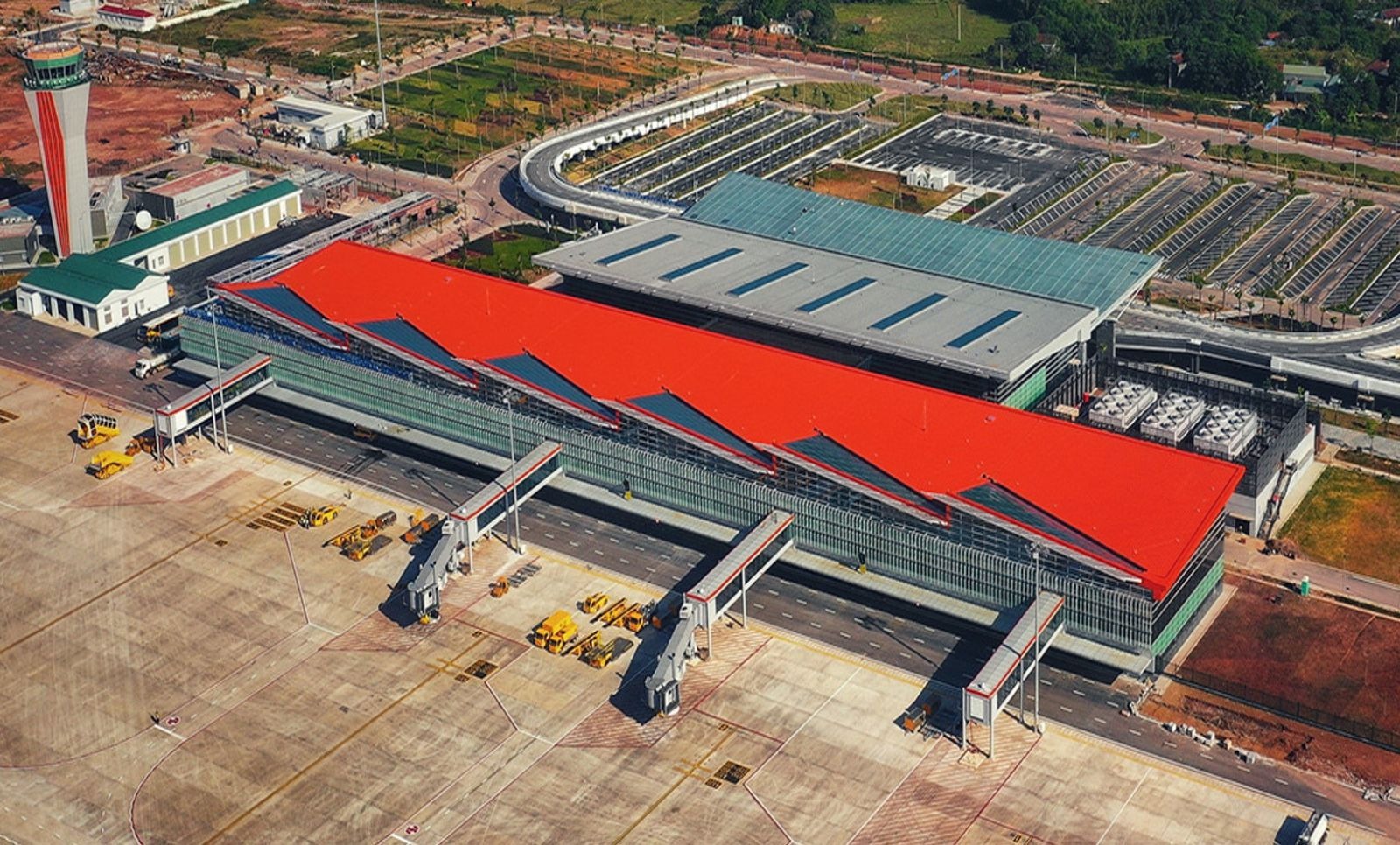
Van Don International Airport Terminal, with its distinctive sail-inspired design, blends seamlessly into the natural landscape.
The project, with Sun Group as the investor, has a total value of VND 7,463 billion, covering an area of 325 hectares. The terminal has a capacity of 2.5 million passengers per year, accommodating 1,250 passengers during peak hours. Construction began in 2016 and was completed in 2018.
Danang International Airport Terminal
The dome design is inspired by the image of a “seagull wing” – a free-flying bird on the East Sea, contributing to the dynamic, modern, and livable image of Danang City on the international stage.

Danang International Airport Terminal, with its seagull-inspired design, symbolizes freedom and modernity.
The international passenger terminal was constructed on a land area of 21,000 m2 with a floor area of 50,800 m2. It has a capacity of 4 million passengers per year, serving 1,800 passengers during peak hours, accommodating code E aircraft, and meeting the planning requirements for Danang International Airport.
Terminal 2 (international terminal) is invested in and operated by Danang International Terminal Company Limited (AHT), which was established on November 15, 2015, with a total investment value of VND 3,504 billion. It was put into operation in May 2017 after 18 months of construction. The international terminal covers an area of 210,000 m2, with a floor area of 48,000 m2.
AHT’s founding shareholders include leading companies in aviation, construction, and financial investment in Vietnam, such as Taseco Group, Hanoi Construction Corporation (HANCORP), AOV Financial Investment Company, and Vietnam Airports Corporation (ACV).
Long Thanh International Airport Passenger Terminal
The terminal’s design is inspired by a blooming lotus, Vietnam’s national flower, symbolizing purity and sustainable development.
The terminal consists of one basement and three floors, with a total floor area of approximately 376,000 m². It features an open space, natural lighting, and an indoor lotus pond.
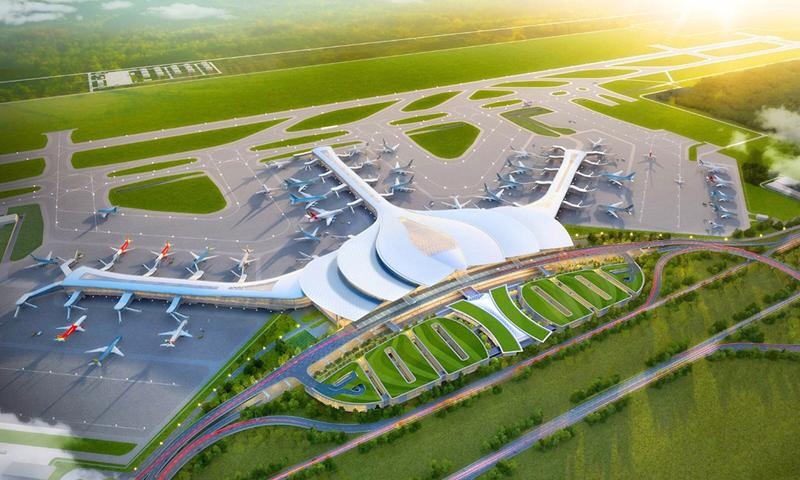
Long Thanh International Airport Passenger Terminal, designed to resemble a blooming lotus, Vietnam’s national flower.
The project investor is Vietnam Airports Corporation (ACV), and the construction package for the passenger terminal (Package 5.10) is worth approximately VND 35,000 billion. It is implemented by the Vietur Consortium, led by IC Ictas of Turkey, in collaboration with Vietnamese contractors such as Ricons, Newtecons, and Vinaconex.
Located in Long Thanh District, Dong Nai Province, the airport covers an area of approximately 5,000 hectares and is about 40km from Ho Chi Minh City. The entire Long Thanh Airport project is expected to be implemented in three phases, with a total investment of up to VND 336,630 billion (equivalent to US$14.12 billion). The first phase is expected to be completed and put into operation by 2026.
Tan Son Nhat International Airport Terminal 3
Terminal 3 at Tan Son Nhat International Airport features a graceful curved roof inspired by the traditional Vietnamese “ao dai” (long dress), symbolizing elegance and national culture. The interlacing roof layers create diverse viewpoints while optimizing natural light inside the terminal.
Construction began in August 2022, and the terminal was officially put into operation in April 2025. Terminal 3 has a total floor area of 112,500 m², including one basement and four floors above ground.
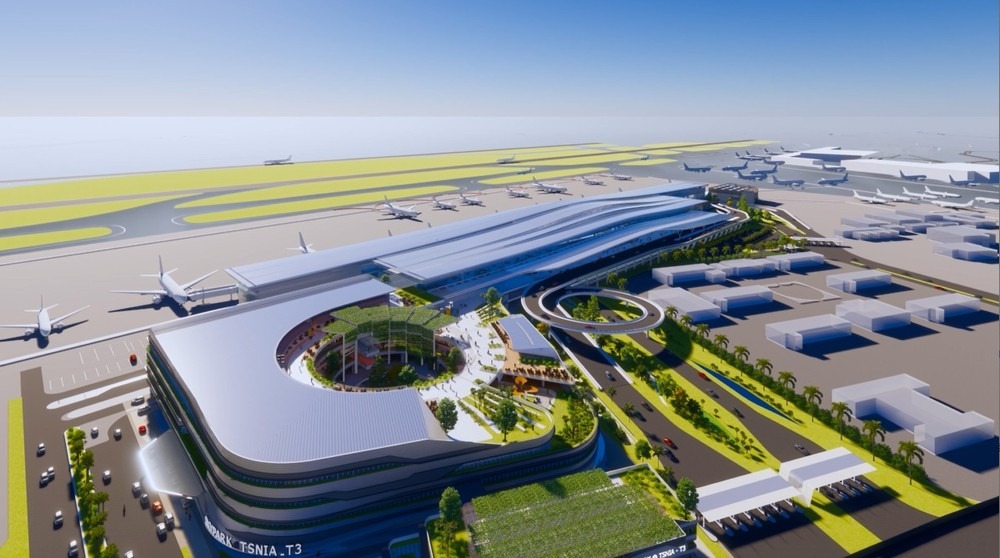
Tan Son Nhat International Airport Terminal 3, with its distinctive roof design inspired by the graceful curves of the Vietnamese “ao dai.”
The project investor is Vietnam Airports Corporation (ACV), with a total investment of nearly VND 11,000 billion, of which 70% is owner’s equity and 30% is commercial loans.
The project is divided into three packages. Package 12 – Construction and Installation of Terminal Equipment – with the largest value, is implemented by a consortium of six contractors, including Hanoi Construction Corporation (Hancorp); Construction Corporation No. 1 (CC1); Corporation 319 (Ministry of Defense); Truong Son Construction Corporation; RICONS Construction Investment Joint Stock Company; and Luu Nguyen Construction Company Limited.
The Ultimate Ring Road Reboot: Unlocking the City’s Potential
The revival of Hanoi’s 2.5 Ring Road with an ambitious target completion date of Q1 2026 is expected to significantly impact the real estate market in the Dai Kim-Dinh Cong and Hoang Mai areas. This accelerated timeline demonstrates a strong determination to untangle the complex traffic issues in southern Hanoi, which have long been a challenge for commuters.

























